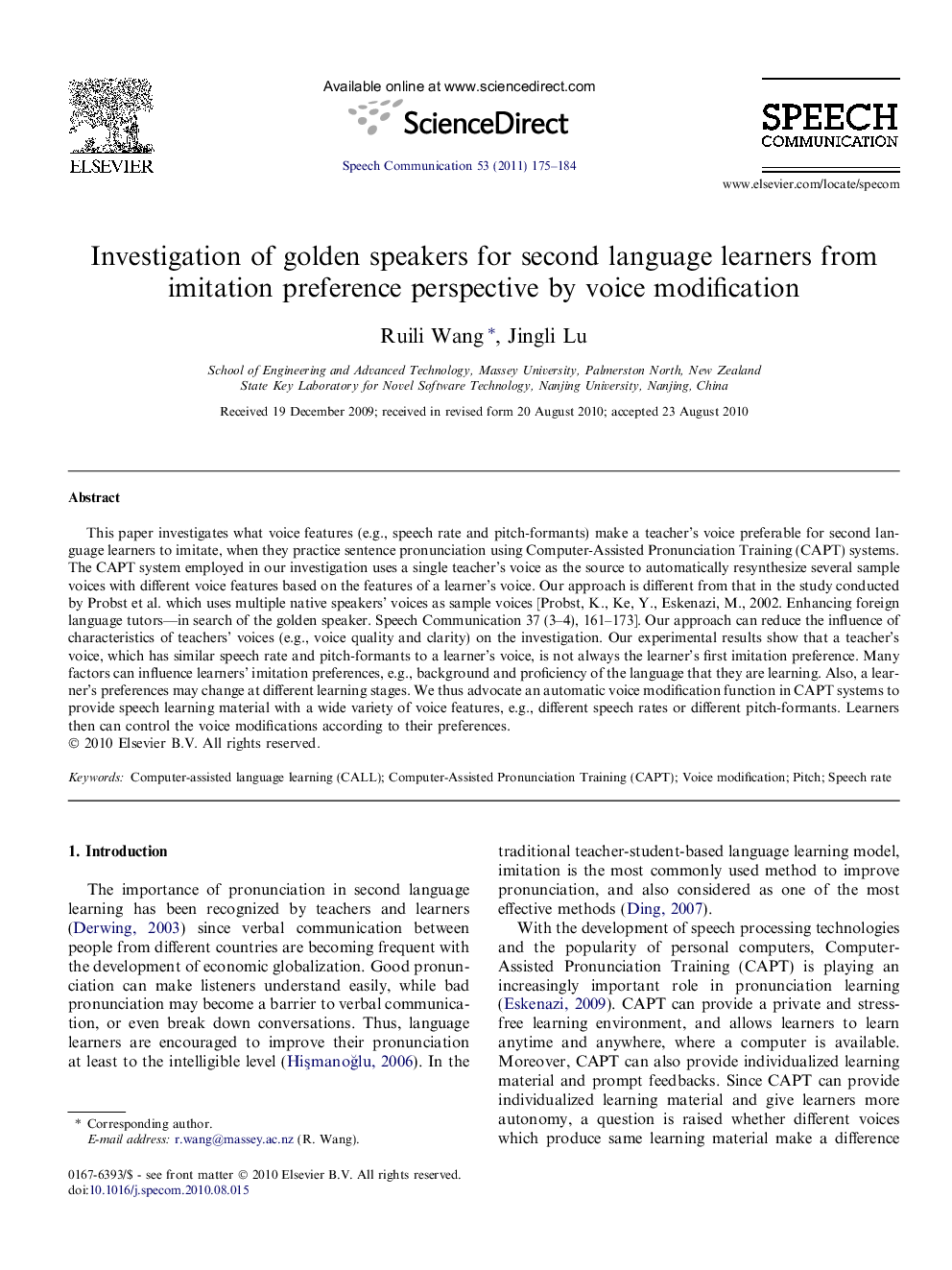| کد مقاله | کد نشریه | سال انتشار | مقاله انگلیسی | نسخه تمام متن |
|---|---|---|---|---|
| 567552 | 876105 | 2011 | 10 صفحه PDF | دانلود رایگان |

This paper investigates what voice features (e.g., speech rate and pitch-formants) make a teacher’s voice preferable for second language learners to imitate, when they practice sentence pronunciation using Computer-Assisted Pronunciation Training (CAPT) systems. The CAPT system employed in our investigation uses a single teacher’s voice as the source to automatically resynthesize several sample voices with different voice features based on the features of a learner’s voice. Our approach is different from that in the study conducted by Probst et al. which uses multiple native speakers’ voices as sample voices [Probst, K., Ke, Y., Eskenazi, M., 2002. Enhancing foreign language tutors—in search of the golden speaker. Speech Communication 37 (3–4), 161–173]. Our approach can reduce the influence of characteristics of teachers’ voices (e.g., voice quality and clarity) on the investigation. Our experimental results show that a teacher’s voice, which has similar speech rate and pitch-formants to a learner’s voice, is not always the learner’s first imitation preference. Many factors can influence learners’ imitation preferences, e.g., background and proficiency of the language that they are learning. Also, a learner’s preferences may change at different learning stages. We thus advocate an automatic voice modification function in CAPT systems to provide speech learning material with a wide variety of voice features, e.g., different speech rates or different pitch-formants. Learners then can control the voice modifications according to their preferences.
Figure optionsDownload as PowerPoint slideResearch highlights
► Voice modification is used to investigate golden speakers for ESL learns.
► Learners of English as a second language have different imitation preferences.
► Imitation preferences may change at different learning stages.
► An automatic voice modification function is advocated for CAPT systems.
Journal: Speech Communication - Volume 53, Issue 2, February 2011, Pages 175–184